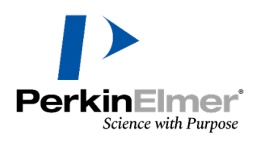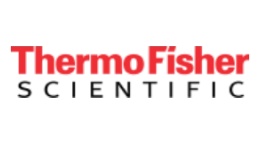方案详情文
智能文字提取功能测试中
SN/T 0122—2011 中华人民共和国出入境检验检疫行业标准 SN/T0122—2011代替SN 0122- -1992 进出口肉及肉制品中甲萘威残留量检验方法 液相色谱-柱后衍生荧光检测法 Determination of carbaryl residues in meat and meat products for import andexport-HPLC-fluoresce detector with post column derivation 2011-02-25发布 2011-07-01实施 前 言 本标准按照 GB/T1.1—2009给出的规则起草。 本标准代替 SN 0122—1992《出口肉及肉制品中甲萘威残留量检验方法》。 本标准与 SN 0122—1992 相比,主要技术变化如下: 样品净化方法采用全自动凝胶渗透色谱净化方法替代原有的液液分配法; 测定采用柱后衍生液相色谱-荧光检测法。 本标准由国家认证认可监督管理委员会提出并归口。 本标准起草单位:中华人民共和国天津出入境检验检疫局。 本标准主要起草人:葛宝坤、赵孔祥、陈其勇、陈旭旭。 本标准所代替标准的历次版本发布情况为: ——SN 0122—1992。 进出口肉及肉制品中甲萘威残留量检验方法 液相色谱-柱后衍生荧光检测法 范围 本标准规定了进出口肉及肉制品中甲萘威残留量的液相色谱-柱后衍生荧光检测法。 本标准适用于进出口牛肉、鸡肉、虾肉、鱼肉及火腿罐头中甲萘威残留量的测定。 2 规范性引用文件 下列文件对于本文件的应用是必不可少的。凡是注日期的引用文件,仅注日期的版本适用于本文件。凡是不注日期的引用文件,其最新版本(包括所有的修改单)适用于本文件。 GB/T6682 分析实验室用水规格和试验方法 3 制样 3.1 肉 将所取全部样品,充分搅碎混匀,取有代表性的样品,总量不少于500 g,装入清洁容器内,密封并标明标记。 3.2 罐头 将所取全部样品整罐倒出,充分搅碎混匀,取有代表性的样品,总量不少于 500 g,装入清洁容器密封并标明标记。 4 试样保存 试样应于一18℃以下保存。在抽样和制样的操作中,应防止样品受到污染或发生含量的变化,以保证实验样品能代表总体样本。 5 原理 用丙酮-石油醚混合溶液提取样品中的甲萘威残留物,经凝胶层析柱净化后,浓缩,高效液相色谱分离,经柱后衍生后,用荧光检测器检测,外标法定量。 6 试剂和材料 本标准所用试剂和水在没有注明其他要求时,均指分析纯试剂,有机试剂为色谱纯和 GB/T 6682中规定的三级水。 6.1 乙。 6.2 乙酸乙酯。 6.3 环己烷。 6.4 丙酮。 6.5 石油醚:沸程30℃~60℃。 6.6 无水硫酸钠:650℃灼烧4h,在干燥器内冷却至室温,贮于密封瓶中备用。 6.7 氯化钠。 6.8 柱后衍生试剂。 6.8.1 氢氧化钠溶液(0.2%,质量浓度)。 6.8.2 邻苯二甲醛(O-Phthaladehyde,OPA). 6.8.3 邻苯二甲醛稀释液:硼砂溶液(0.4%,质量浓度)。 6.8.4 巯基乙醇(Thiofluor)。 6.8.5 邻苯二甲醛试液的配制:溶剂储罐中注入945 mL OPA 稀释剂,用惰性气体(氮气)吹扫至少10 min,100 mg OPA 固体溶解于约10 mL 的色谱纯甲醇中,将 OPA 溶液加入除氧的 OPA 稀释剂中,溶解2g巯基乙醇固体于5mL OPA 稀释剂中,加入到储罐中,盖上瓶盖,打开气流,再不断的吹扫几分钟,关闭排气阀,轻轻地搅动溶剂以使其完全混合。 6.9 乙酸乙酯-环己烷混合溶液(1十1,体积比)。 6.10 0.45 um 尼龙滤膜。 6.11 甲萘威:分子式C12HNOz,CAS编号 63-25-2,纯度大于99.5%。 6.12 甲萘威标准储备液:准确称取适量的甲奈威标准品,以乙腈溶解,4℃冰箱保存,有效期为6个月。 6.13 甲萘威标准工作液:取一定量的标准储备液,用乙腈稀释至适当浓度,4℃冰箱保存,有效期为1周。 7 仪器和设备 7.1 液相色谱仪:配有荧光检测器和柱后衍生单元。 7.2 全自动凝胶色谱仪(配有馏分收集浓缩器)。 7.3 旋转蒸发装置。 7.4 氮吹仪。 7.5 组织匀浆机。 7.6 振荡器。 8 分析步骤 8.1 提取及净化 8.1.1 样品的提取 称取试样20g(精确到0.01 g),于100 mL具塞三角瓶中,加水6mL(视样品水分含量加水使总水量约20 g,肉通常在70%左右,加水6mL),加40 mL 丙酮,匀浆1 min,加氯化钠6g,充分摇匀,再加30 mL 石油醚,振摇 30 min。取 35 mL有机层上清液,经无水硫酸钠滤于旋转蒸发瓶中,浓缩至约1mL,加2mL乙酸乙酯-环己烷(6.9)溶液再浓缩,如此重复3次。乙酸乙酯-环己烷(6.9)定容为5 mL,0.45 um 滤膜过滤,待净化。 8.1.2 样品的凝胶色谱(GPC)净化 8.1.2.1 凝胶色谱净化条件 8.1.2.1.1 净化柱:400 mm×30 mm,Bio Beads S-X3,或相当者。 8.1.2.1.2 流动相:乙酸乙酯-环己烷(6.9)。 8.1.2.1.3 流速:5.0mL/min。 8.1.2.1.4 样品定量环:5mL。 8.1.2.1.5 馏分收集段:10.0 min~15.0 min。 8.1.2.1.6 净化柱平衡时间:5 min。 8.1.2.2 凝胶色谱浓缩条件 8.1.2.2.1 样品浓缩条件见表1。 表1 馏分浓缩条件 浓缩时间段 浓缩杯区域 温度 ℃ 真空度 Torr 样品浓缩过程 1区 50 280 2区 52 220 3区 54 210 浓缩终点到达过程 1区 52 220 2区 53 220 8.1.2.2.2 浓缩终点判定:液位传感模式。 8.1.2.2.3 溶剂替换:2mL乙腈,重复两次。 8.1.2.2.4 定容体本:1mL。 8.1.2.3 凝胶色谱净化步骤 将5 mL待净化液按8.1.2.1和8.1.2.2规定的条件进行净化与浓缩,最后得到1mL净化化待测定。 8.2 测定 8.2.1 液相色谱条件 8.2.1.1 色谱柱:C18,250 mm×4.6 mm×5_m,或相当者。 8.2.1.2 柱温:42℃。 8.2.1.3 荧光检测器:入x330 nm,入em465 nm。 8.2.1.4 流动相:乙乙十水(40十60,体积比)。 8.2.1.5 流速:1.0mL/min。 8.2.1.6 进样量:20uL。 8.2.2 柱后衍生 8.2.2.1 衍生试剂1:水解试剂,0.4%的氢氧化钠溶液,流速0.4 mL/min。 8.2.2.2 衍生试剂 2:OPA试剂,流速0.4 mL/min。 8.2.2.3 反应器温度:水解温度为100℃,衍生温度为室温。 8.2.3 色谱测定 根据样液中被测甲萘威的含量情况,选定浓度相近的标准工作液,其响应值应在方法检测的线性范围内。在上述液相色谱条件下,甲萘威保留时间为 11.1 min,色谱图参见图A. 1。 8.2.4 空白试验 除不加试样外,均按上述步骤进行。 8.2.5 结果计算 按式(1)计算试样中甲萘威的含量: 式中: X——试样中甲萘威的含量,单位为毫克每千克(mg/kg); A——试样中甲萘威的色谱峰面积; cs——标准工作溶液中甲萘威的浓度,单位为微克每毫升(ug/mL); V——样液最终定容体积,单位为毫升(mL); A,——标准工作溶液中甲萘威的色谱峰面积; m——最终样液所代表的量,单位为克(g)。 9 测定低限、回收率 9.1 测定低限 本方法的测定低限:0.005 mg/kg。 9.2 回收率 肉及肉制品添加回收率见表2。 表2 肉及肉制品添加回收率 样品 添加水平 mg/kg 回收率范围% 样品 添加水平mg/kg 回收率范围% 鱼肉 0.005 82.0~110.0 火腿 0.005 90.0~96.0 0.010 89.0~107.0 0.010 100.0~114.0 0.020 94.0~112.5 0.020 97.0~115.5 0.050 90.0~105.6 0.050 101.6~113.6 0.100 92.0~111.2 0.100 92.5~107.3 牛肉 0.005 82.0~98.0 虾肉 0.005 86.0~100.0 0.010 86.0~99.0 0.010 85.0~96.0 0.020 84.5~109.5 0.020 87.0~105.0 0.050 90.6~98.0 0.050 88.6~94.6 0.100 88.4~98.0 0.100 86.7~95.1 鸡肉 0.005 86.0~96.0 0.010 89.0~97.0 0.020 95.5~112.5 0.050 92.0~97.2 0.100 85.9~95.0 0.500 87.7~102.5 附 录 A (资料性附录) 甲萘威标准色谱图 图 A. 1 甲萘威标准的液相色谱图(0.1pg/mL) Foreword This standard was drafted in accordance with the GB/T 1.1一2009. This standard replaced SN 0122—1992 Method for determination of carbaryl residues in meat for ex-port. Compared with SN 0122—1992,this standard is of major modifications as follows: -Modified the sample purification mothod for automatic gel chromatography; -Changed the detection for liquid chromatography-fluresence detector with post column derivation. This standard was proposed by and was under the charge of Certification and Acrreditation Adimin-station of People's Republic of China. This standard was drafted by Tianjin Entry-Exit Inspection and Quarantine Bureau of People’s Repub-lic of China. This standard was mainly drafted by Ge Baokun,Zhao Kongxiang,Chen Qiyong,Chen Xuyan. This standard replaced the previous version of the release of the standard as follows: —SN 0122一1992. Determination of carbarylresidues in meat and meatproducts for import and export—HPLC-fluorescedetector with post column derivation Scope The standard provides a determination method of cabaryl residues in meat and meat products for im-port and export by HPLC-fluoresce detector with post column derivation. The standard is used to determine cabaryl residues in chicken,fish,beef,thrimp and ham for importand export. 2Normative references The following normative documents contain provisons which,through reference in this text,consti-tute provisions of this standard. For dated references,subsequent amendments to,or revisions of,any of these publications do not apply. However,parties to agreements based on this standard areencouraged to investigate the possibility of applying the most recent editions of the normative docu-ment referred to applies. GB/T 6682 Water for analytical laboratory use-Specification and test methods 3Sample 3.1 Meat All samples should be mixing minced,the total amount of the representative sample should be notless than 500 g. The samplemust be placed into a suitable clean,sealed and marked container. 3.2 Canned Foods All samples should be poured out the entire tank and mixing minced,the total amount of the repre-sentative sample should be not less than 500 g. The sample must be placed into a suitable clean,sealed and marked container. 4 Sample preservation The specimen should be preserved below-18℃ and should not be contaminated. There should beno change in content of sample to ensure that experimental samples can represent the entire sample. 5Principle The carbaryl residues of the sample were extrated by acetone-petroleum and purified by gel perme-ation chromatography. After concentrated,the residues were determined by high performance liquidchromatography with fluorescence detector and the set of post-column derivatizaion. 6Reagents and materials Unless specified, all the reagents used should be analytical grade,and“water"is the third grade waterwhich is defiened in GB/T 66822008. 6.1 Acetonitril. 6.22Ethyl acetate. 6.3 Cyclohexane. 6.4 Acetone. 6.5 Petroleum ether,boiling point ranges from 30 ℃~60℃. 6.6 Anhydrous sodium sulfate. Heat at 650 ℃ for 4 h,cool in desiccator and store in an amber bot.tle. 6.7 Sodium chloride. 6.8 Post-Column Derivatization reagent. 6.8.1 Sodium hydroxide solutions (0.2%,m/V). 6.8.22(O-Phthaladehyde (OPA). 6.8.33O-phthalaldehyde diluent (Borax Solution,0.4%,m/V). 6.8.4 Thiofluor. 6.8.5 Solution of OPA: 945 mL OPA dilution was poured into the solvent tank, then nitrogenpurging for 10 min at least. 100 mg OPA was dissolved in about 10 mL chromatographic grade metha-nol,then turn off the gas and strip the bottle cap. The OPA solution was added into the OPA dilution.2 g mercaptoethanol was dissolved in 5 mL OPA dilution and added into the solution tank,close thebottle cap and turn on the gas, then nitrogen purging for several minutes and turn off the vent valve.Stir slowly to mix the solution completely. 6.9 Cyclohexane-ethyl acetate (1+1,V/V). 6.10DNylon fliter,0.45 um. 6.11 Carbaryl:Molecular formula C12H1NO2,CAS No.63-25-2,purity of greater than 99.5%. 6.12 Storage standard solution:Accurate weigh the right amount of carbaryl standard,dissolve it inacetonitrile,and storage in 4℃ refrigerator. The solution is valid for 6 months. 6.13 Work standard solution. Dilute the storage solution with acetonitrile to Appropriate concentration.This solution is valid in one week. 7 Instrucments 7.1 Liquid chromatography:Fluorescence detector and the unit of post-column derivation. 7.2 Automated gel permeation chromatography (with fraction collection with concentrator). 7.3 Rotary evaporation. 7.4 Nitrogen blowing Instrument. 7.5Homogenate machine. 7.6 Electronic oscillator. 8 Experimention 8.1 Extraction and purification performance 8.1.1 Extraction A 20 g sample of meat product was weighted out exactly into a 100 mL conical flask with stopper, 6 mL water and 40 mL acetone were added. After homogenized for 1 min ,6 g NaCl was added,themixture was shaken vigorously with 30 mL petroleum ether for 30 min. 35 mL organic layer was fil-tered through anhydrous sodium sulfate. The filtrate was collected in a flask and evaporated to ap-proximately 1 mL with a rotary evaporator.Then 2 mL ethyl acetate-cyclohexane(1+1,V/V) wasadded into the flask and evaporated,the performance was repeated for 3 times. The residue obtainedwas dissolved in 5 mL ethyl acetate-cyclohexane (1+1,V/V),and then filtered through a 0. 45 _mfilter before GPC purification. 8.1.2 GPC purification 8.1.2.1 GPC purification conditions 8.1.2.1.1 Purification column:400 mmx30 mm,Bio Beads S-X3, or the comparative. 8.1.2.1.2 Mobile phase:Ethyl acetate-cyclohexane (1+1,V/V). 8.1.2.1.3 Flow:5.0 mL/min. 8.1.2.1.4 Sample loop:5 mL. 8.1.2.1.55CCollection:10.0 min~15.0 min. 8.1.2.1.66Equilibrium time:5 min. 8.1.2.2(GPC concentration conditions 8.1.2.2.1 GPC concentration conditions was shown in table 1. Table 1一Evaporation conditions Evaporation session Zone Heating rate℃ Vacuum Torr evaporation 1 50 280 2 52 220 3 54 210 endpoint 1 52 220 2 53 220 8.1.2.2.2 Endpoint judgment:Level sensor mode. 8.1.2.2.3 Solution exchange:2 mL acetonitrile, repeated for 2 times. 8.1.2.2.4 Constant volume:1mL. 8.1.2.3 Procedure of GPC purification 5 mL residue obtained from the extraction procedure was purified and concentrated through themethod mentioned in 8. 1.2. 1 and 8. 1.2.2, then 1 mL purified solution was obtained for furtherHPLC analysis. 8.2 HPLC Analysis 8.2.1 HPLC conditions 8.2.1.1 Column:C18,250 mm×4.6 mm×5 um,or the comparative. 8.2.1.2 Column temperature:42℃. 8.2.1.3 FLD:ex 330 nm,7em 465 nm. 8.2.1.4 Mobilephase:Acetonitrile-water (40+60,V/V). 8.2.1.5 Flow:1.0 mL/min. 8.2.1.6 Volume of injection:20 uL. 8.2.2 Post-column derivatization 8.2.2.1 Derivative Reagent 1:Hydrolytic reagent,0.4% NaOH,Flow 0.4 mL/min. 8.2.2.2 Derivative Reagent 2:OPA reagent,Flow:0.4 mL/min. 8.2.2.3 Reactor temperature: Hydrolysis temperature, 100℃;Derivativation temperature, Roomtemperature. 8.2.3 HPLC quantification Choose appropriate standard solution according to the amount of carbaryl in sample. Retention timeof carbaryl was about 11.1 min under the conditions mentioned above. Chromatogram of carbarylwas shown in annex A Figure A. 1. 8.2.4 Blank trial Performed through the above procedure with blank sample. 8.2.5(Calculation The amount of carbaryl in sample was calculated through formula (1): Where X -Amount of carbaryl in sample,mg/kg; A -Peak area of carbaryl; Cs -Concentration of carbaryl in the standard curves,ug/mL; V -Final volume of the carbaryl residue,mL; As-Peak area of carbaryl in the standard solution; m-Amount of the sample,g. 9Limit of detection and rocoveries 9.1 Limit of detection (LOD) LOD of the method was 0.005 mg/kg. 9.2 Recoveries Recoveries of carbaryl residues in meat and meat products see table 2. Table 2—Recoveries of carbaryl residues in meat and meat products Sample Fortified levelmg/kg Recoveries% Sample Fortified levelmg/kg Recoveries% fish 0.005 82.0~110.0 ham 0.005 90.0~96.0 0.010 89.0~107.0 0.010 100.0~114.0 0.020 94.0~112.5 0.020 97.0~115.5 0.050 90.0~105.6 0.050 101.6~113.6 0.100 92.0~111.2 0.100 92.5~107.3 beef 0.005 82.0~98.0 shrimp 0.005 86.0~100.0 0.010 86.0~99.0 0.010 85.0~96.0 0.020 84.5~109.5 0.020 87.0~105.0 0.050 90.6~98.0 0.050 88.6~94.6 0.100 88.4~98.0 0.100 86.7~95.1 chicken 0.005 86.0~96.0 0.010 89.0~97.0 0.020 95.5~112.5 0.050 92.0~97.2 0.100 85.9~95.0 0.500 87.7~102.5 Annex A(Informative) Chromatogram of carbaryl standard Figure A. 1-Chromatogram of carbaryl standard (0.1 pg/mL) 中华人民共和 玉发布国家质量监督检验检疫总局 中华人民共和国出入境检验检疫行业标准SN/T 0122-2011代替 SN 0122-199211 范围进出口肉及肉制品中甲萘威残留量检验方法 液相色谱一柱后衍生荧光检测法SN/T 0122-2011本标准规定了进出口肉及肉制品中甲萘威残留量的液相色谱一柱后衍生荧光检测法。本标准适用于进出口牛肉、鸡肉、虾肉、鱼肉及火腿罐头中甲萘威残留量的测定。2 规范性引用文件 下列文件对于本文件的应用是必不可少的。凡是注日期的引用文件,仅注日期的版本适用于本文件。凡是不注日期的引用文件,其最新版本(包括所有的修改单)适用于本文件。 GB/T 6682 分析实验室用水规格和试验方法3 制样3.1 肉 将所取全部样品,充分搅碎混匀,取有代表性的样品,总量不少于500 9,装入清洁容器内,密封并标明标记。3.2罐头 将所取全部样品整罐倒出,充分搅碎混匀,取有代表性的样品,总量不少于500 9,装入清洁容器密封并标明标记。4 试样保存 试样应于-18℃以下保存。在抽样和制样的操作中,应防止样品受到污染或发生含量的变化,以保证实验样品能代表总体样本。5 原理 用丙酮一石油醚混合溶液提取样品中的甲萘威残留物,经凝胶层析柱净化后,浓缩,高效液相色谱分离,经柱后衍生后,用荧光检测器检测,外标法定量。6 试剂和材料 本标准所用试剂和水在没有注明其他耍求时,均指分析纯试剂,有机试剂为色谱纯和GB/T 6682中规定的三级水。6.1 乙腈。6.2 乙酸乙酯。6.3 环己烷。6.4 丙酮。6.5 石油醚:沸程30℃~60℃。6.6 无水硫酸钠:650℃灼烧4h,在干燥器内冷却至室温,贮于密封瓶中备用。6.7 氯化钠。6.8 柱后衍生试剂。6.8.1 氢氧化钠溶液(0.2%,质量浓度)。6.8.2 邻苯二甲醛( O-Phthaladehyde,OPA)。6.8.3 邻苯二甲醛稀释液:硼砂溶液(0. 4%,质量浓度)。6.8.4 巯基乙醇(Thiofluor)。6.8.5 邻苯二甲醛试液的配制:溶剂储罐中注入945 mL OPA稀释剂,用惰性气体(氮气)吹扫至少10 min.100 mg OPA固体溶解于约10 mL的色谱纯甲醇中,将OPA溶液加入除氧的OPA稀释剂中,溶解2 9巯基乙醇固体于5 mL OPA稀释剂中,加入到储罐中,盖上瓶盖,打开气流,再不断的吹扫几分钟,关闭排气阀,轻轻地搅动溶剂以使其完全混合。6.9 乙酸乙酯一环己烷混合溶液(I+I,体积比)。6. 10 0.45_um尼龙滤膜。6. 11 甲萘威:分子式C12 H1i N02,CAS编号63-25-2,纯度大于99. 5%。6. 12 甲萘威标准储备液:准确称取适量的甲奈威标准品,以乙腈溶解,4℃冰箱保存,有敖期为6个月。6. 13 甲萘威标准工作液:取一定量的标准储备液,用乙腈稀释至适当浓度,4℃冰箱保存,有效期为1周。7 仪器和设备7.1 液相色谱仪:配有荧光检测器和柱后衍生单元。7.2全自动凝胶色谱仪(配有馏分收集浓缩器)。7.3 旋转蒸发装置。7.4氮吹仪。7.5组织匀浆机。7.6振荡器。8 分析步骤8.1 提取及净化8.1.1 样品的提取 称取试样20 9(精确到0. OI 9),于IOO mL具塞三角瓶中,加水6 mL(视样品水分含量加水使总水量约20 9,肉通常在70%左右,加水6 mL),加40 mL丙酮,匀浆1 min,加氯化钠6 9,充分摇匀,再加30 mL石油醚,振摇30 min。取35 mL有机层上清液,经无水硫酸钠滤于旋转蒸发瓶中,浓缩至约1 mL,加2 mL乙酸乙酯一环己烷(6.9)溶液再浓缩,如此重复3次。乙酸乙酯一环己烷(6.9)定容为5 mL,0.45 Um滤膜过滤,待净化。8.1.2 样品的凝胶色谱(GPC)净化8.1.2.1 凝胶色谱净化条件8.1.2.1.1 净化柱:400 mm×30 mm,Bio Beads S-X3,或相当者。8.1.2.1.2 流动相:乙酸乙酯一环己烷(6.9)。8.1.2.1.3 流速:5.O mL/min。8.1.2.1.4 样品定量环:5 mL。8.1.2.1.5 馏分收集段:10.0 min~15.0 min。8.1.2.1.6 净化柱平衡时间:5 min8.1.2.2 凝胶色谱浓缩条件8.1.2.2.2浓缩终点判定:液位传感模式。8.1.2.2.3溶剂替换:2 mL乙腈,重复两次。8.1.2.2.4 定容体积:1 mL。8.1.2.3 凝胶色谱净化步骤 将5 mL待净化液按8.1.2.1和8.1.2.2规定的条件进行净化与浓缩,最后得到1 mL净化液待测定。8.2 测定8.2.1 液相色谱条件8.2.1.1 色谱柱:Cis,250 mm×4.6 mm×5弘m,或相当者。8.2.1.2柱温:42℃。8.2.1.3荧光检测器:A。。330 nm,Atn1465 nm。8.2.1.4流动相:乙腈十水(40+60,体积比】。8.2.1.5流速:1.O mL/min。8.2.1.6进样量:20 uL。8.2.2柱后衍生8.2.2.1 衍生试剂1:水解试剂,0. 4%的氢氧化钠溶液,流速0.4 mL/min。8.2.2.2 衍生试剂2:OPA试剂,流速0.4 mL/min。8.2.2.3反应器温度:水解温度为100℃,衍生温度为室温。8.2.3 色谱测定 根据样液中被测甲萘威的含量情况,选定浓度相近的标准工作液,其响应值应在方法检测的线性范围内。在上述液相色谱条件下,甲萘威保留时间为II.1 min,色谱图参见图A.1。8.2.4 空白试验 除不加试样外,均按上述步骤进行。8.2.5 结果计算 按式(l)计算试样中甲萘威的含量: 9测定低限9.1 测定低限 本方法的测定低限:0. 005 mg/kg。天津兰博关注食品安全
关闭-
1/16
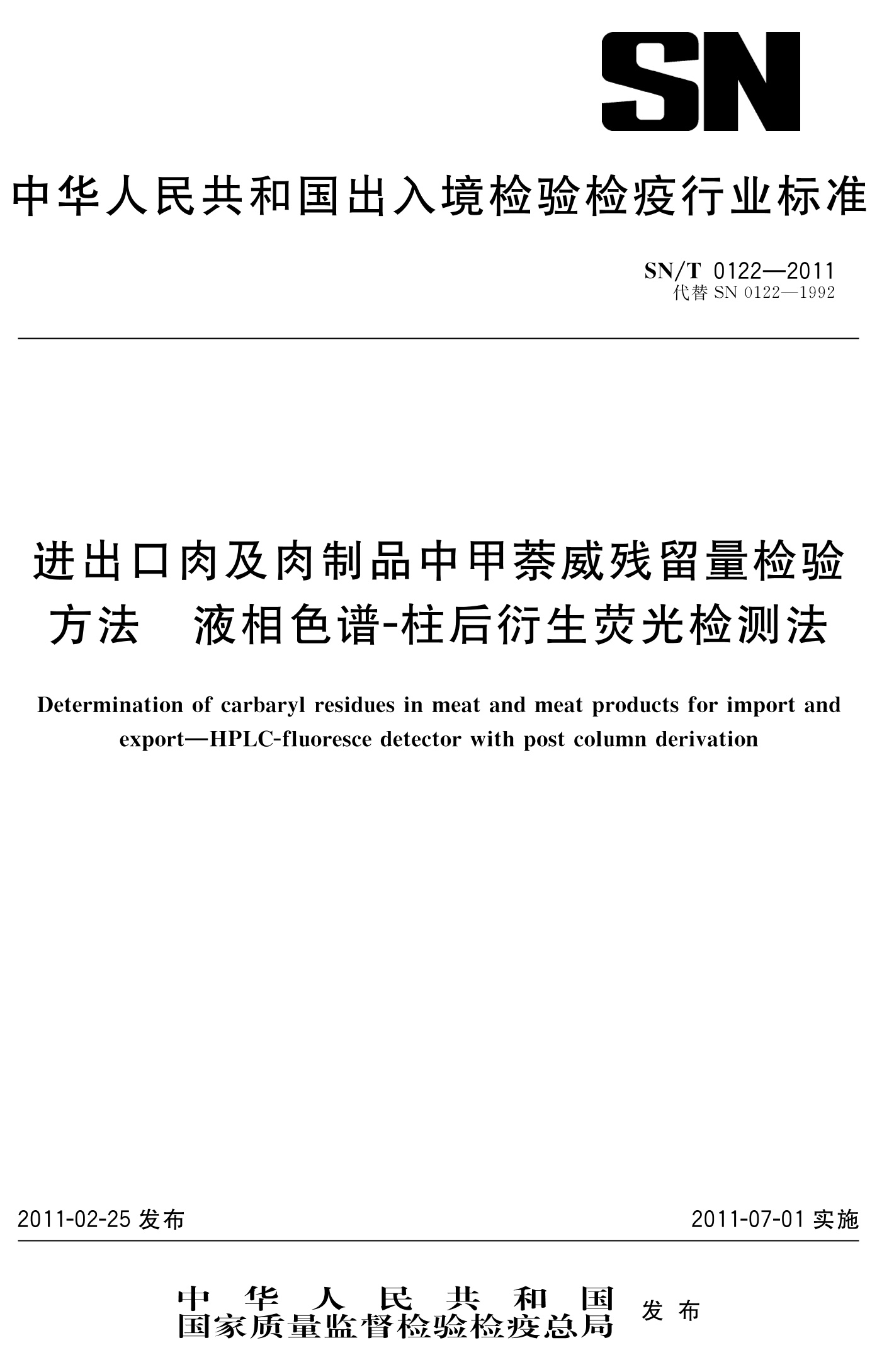
-
2/16
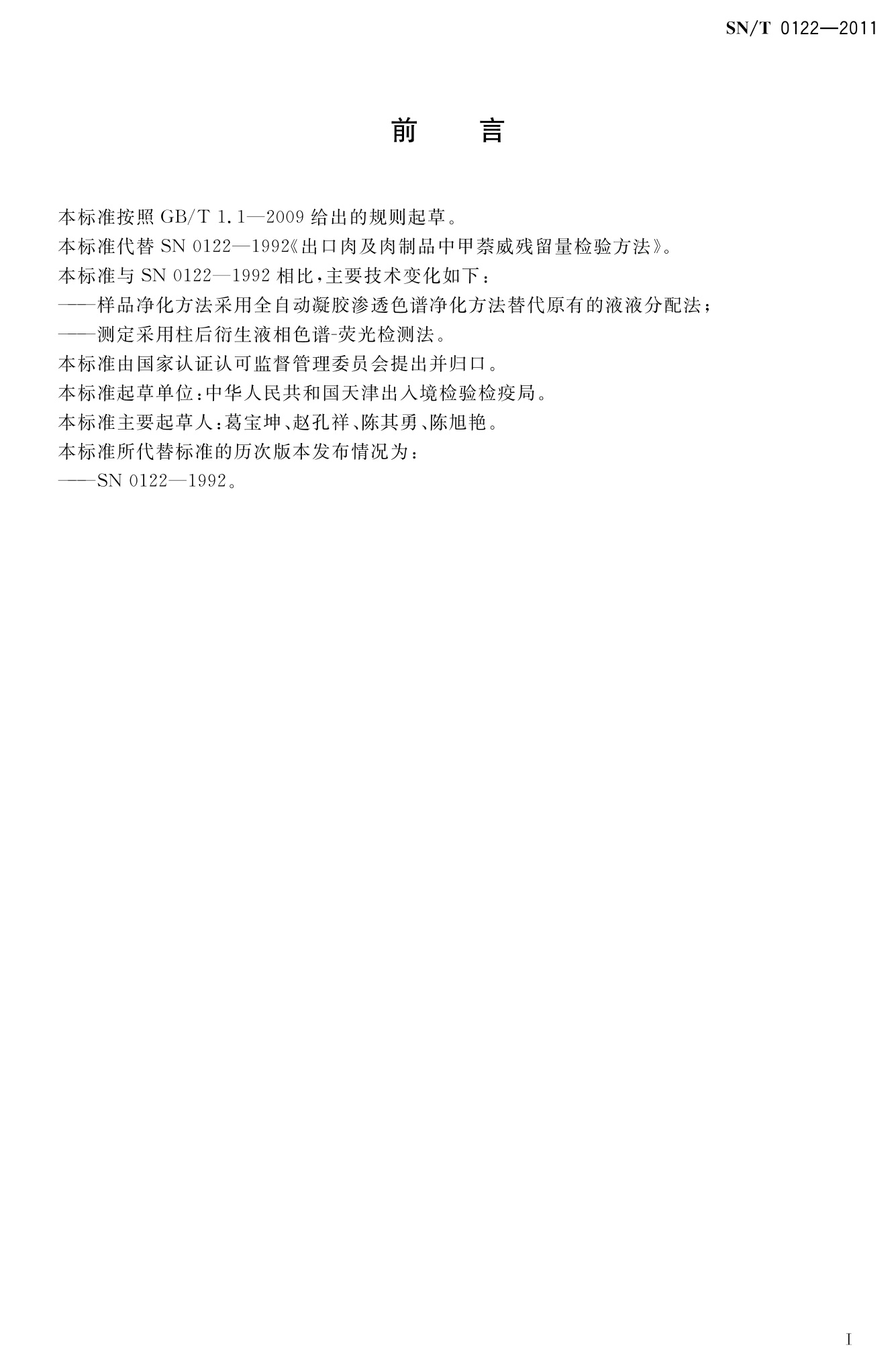
还剩14页未读,是否继续阅读?
继续免费阅读全文产品配置单
天津市兰博实验仪器设备有限公司为您提供《进出口肉中甲萘威检测方案(柱后衍生装置)》,该方案主要用于畜禽肉及副产品中农药残留检测,参考标准《暂无》,《进出口肉中甲萘威检测方案(柱后衍生装置)》用到的仪器有Laba PCR3 第三代柱后衍生系统、PC-4000液相色谱(高压四元系统)、502型可编程荧光检测器。
我要纠错
推荐专场
色谱检测器/蒸发光检测器/紫外检测器
更多相关方案


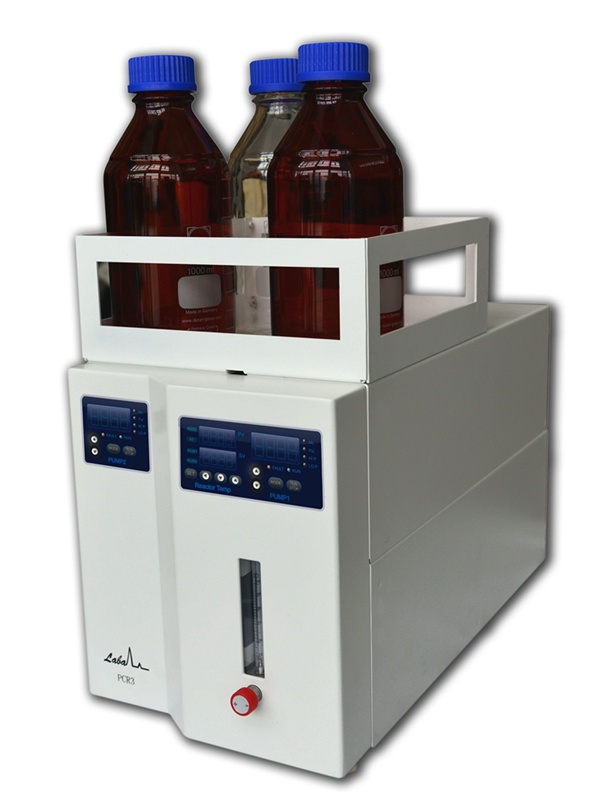
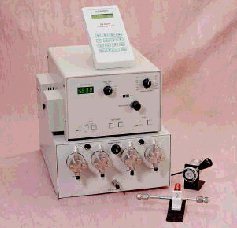
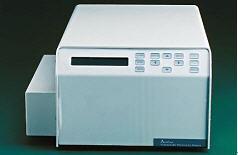
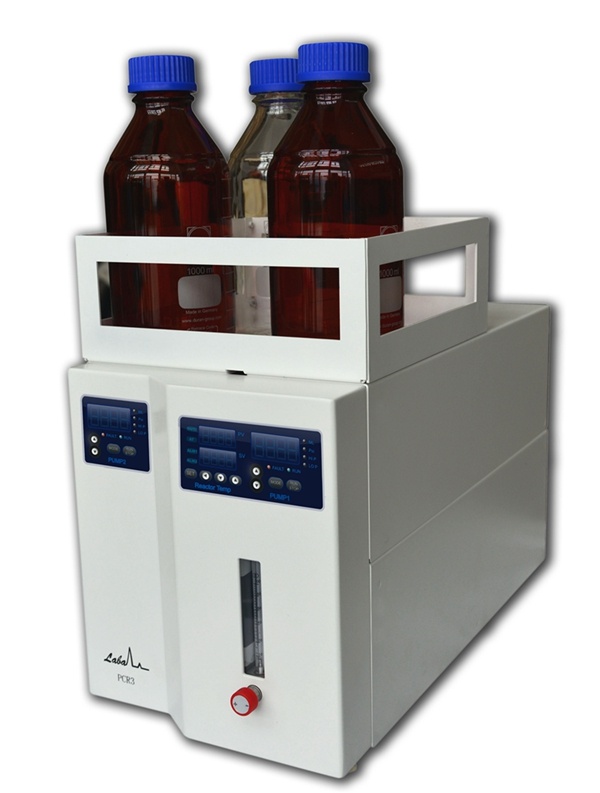
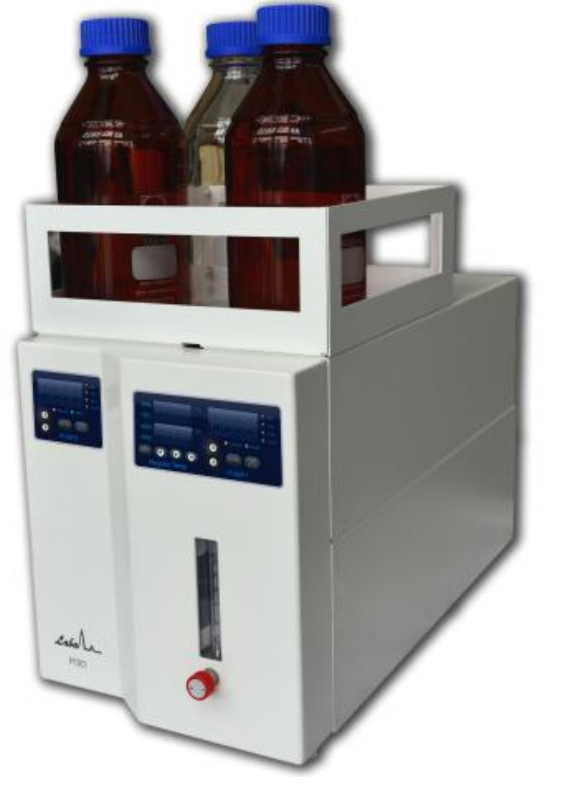
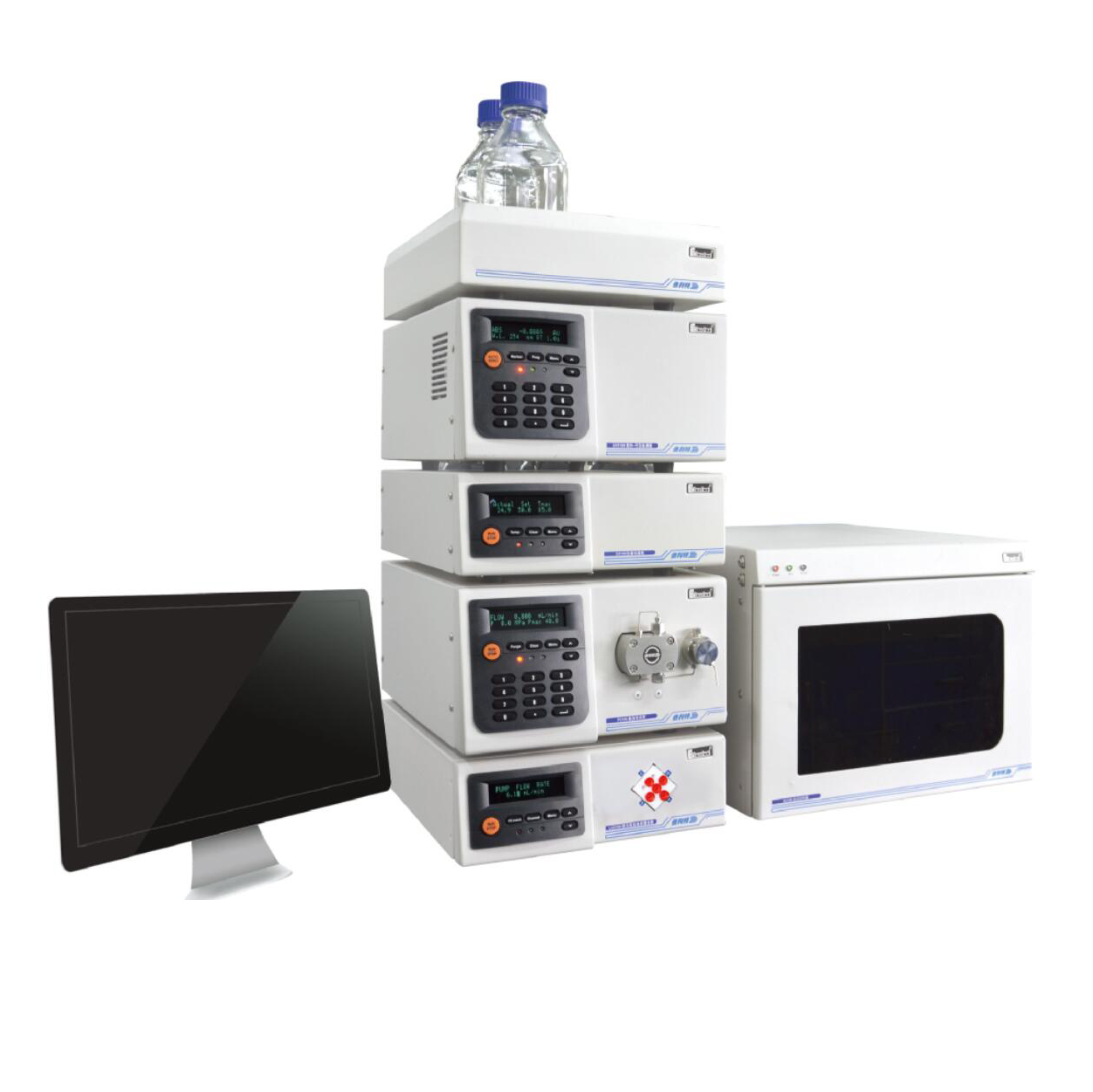
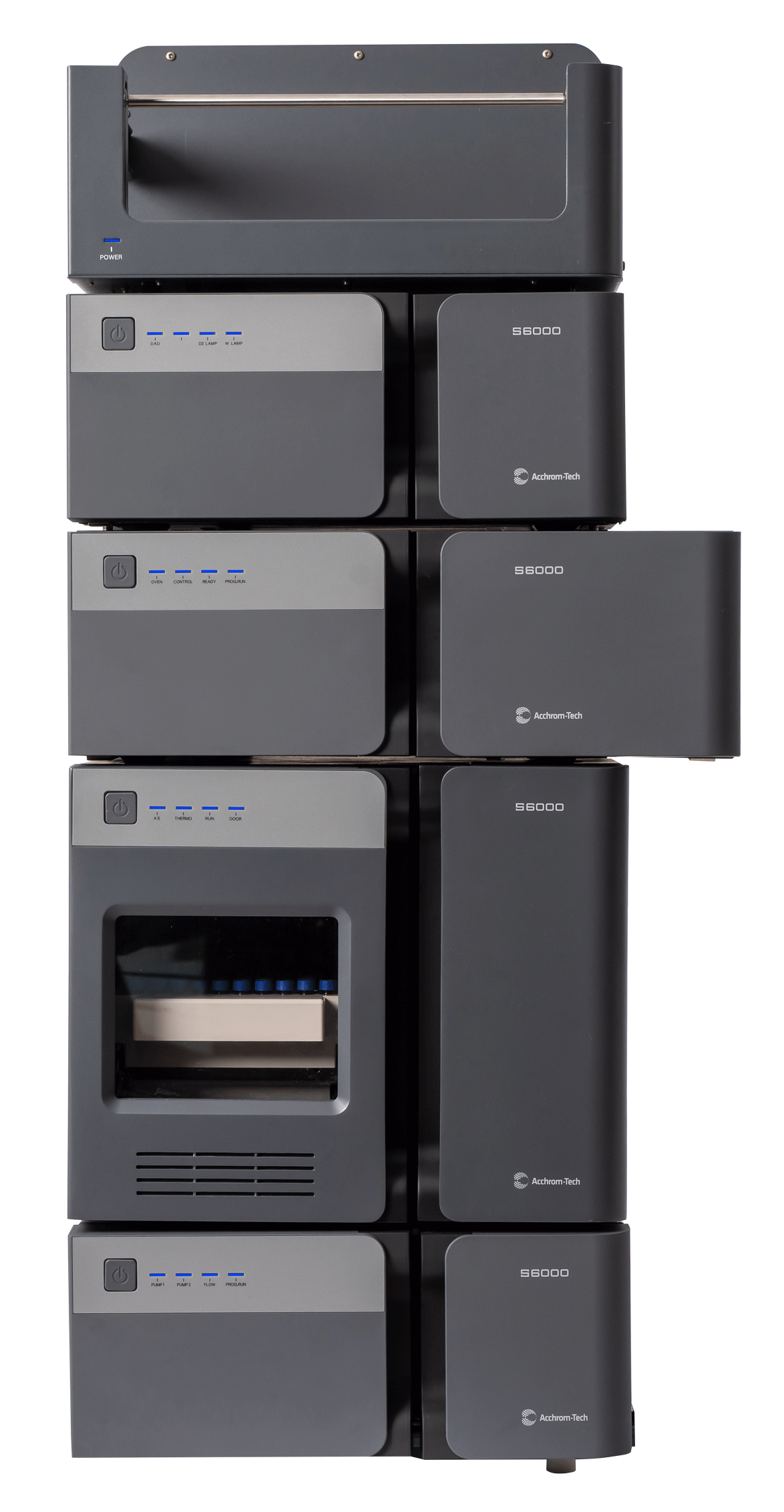
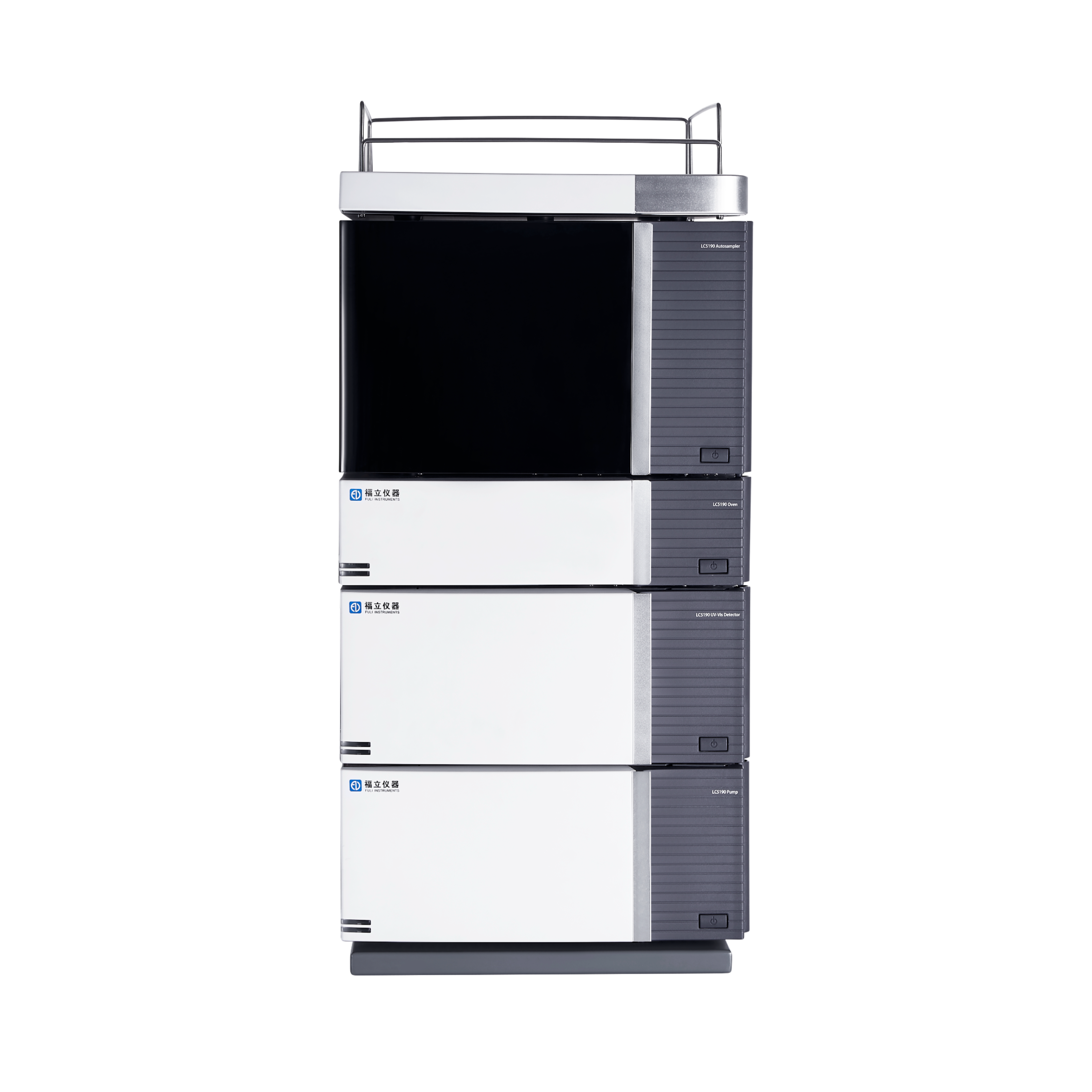
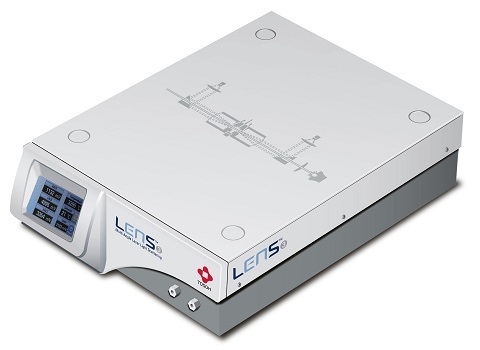

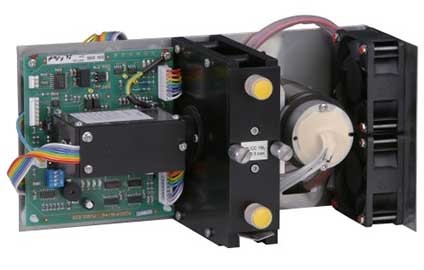
 咨询
咨询
